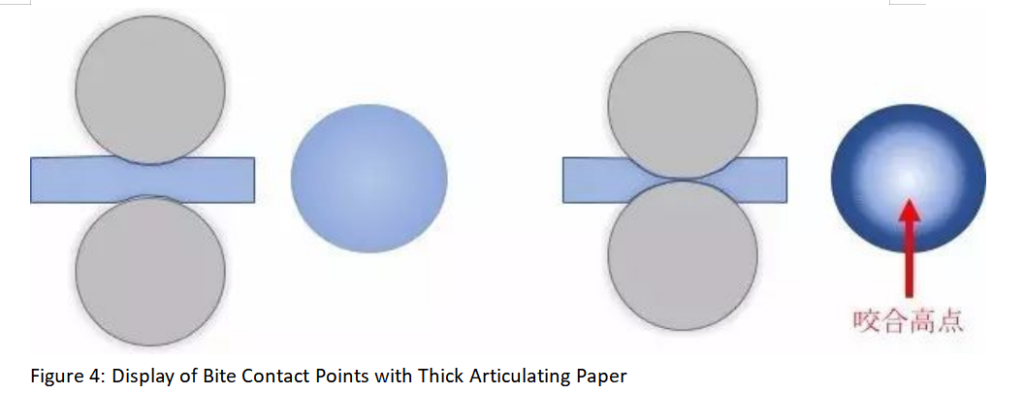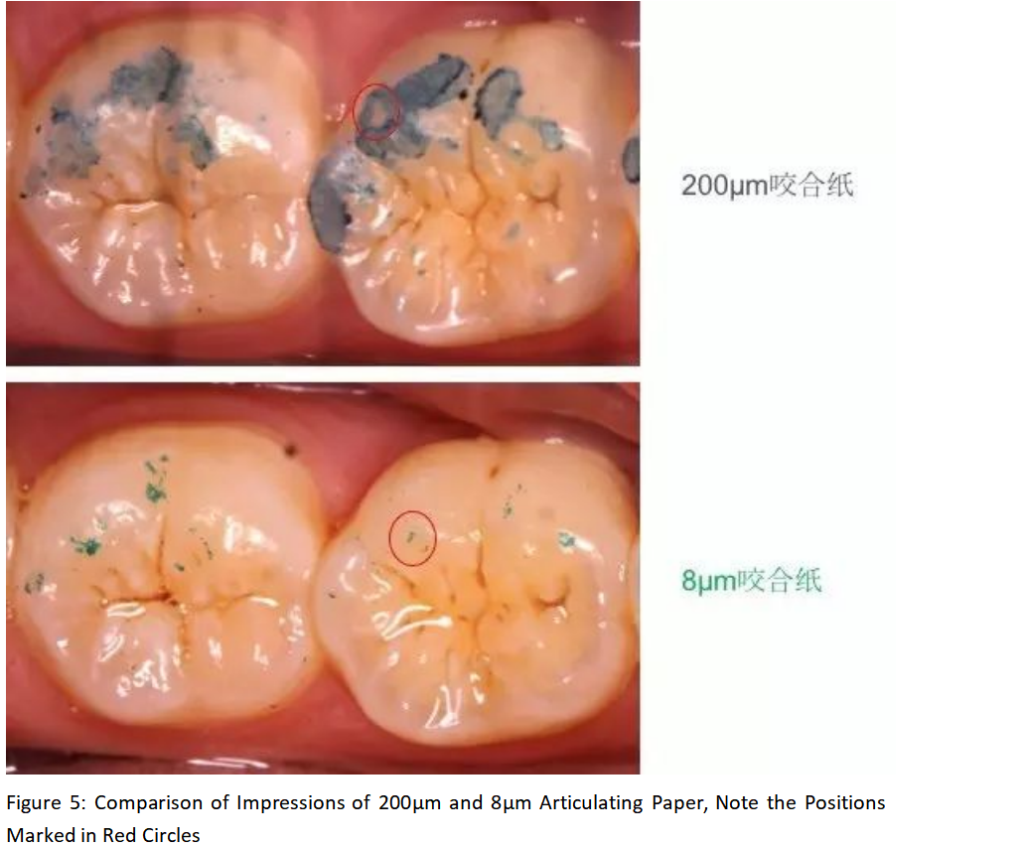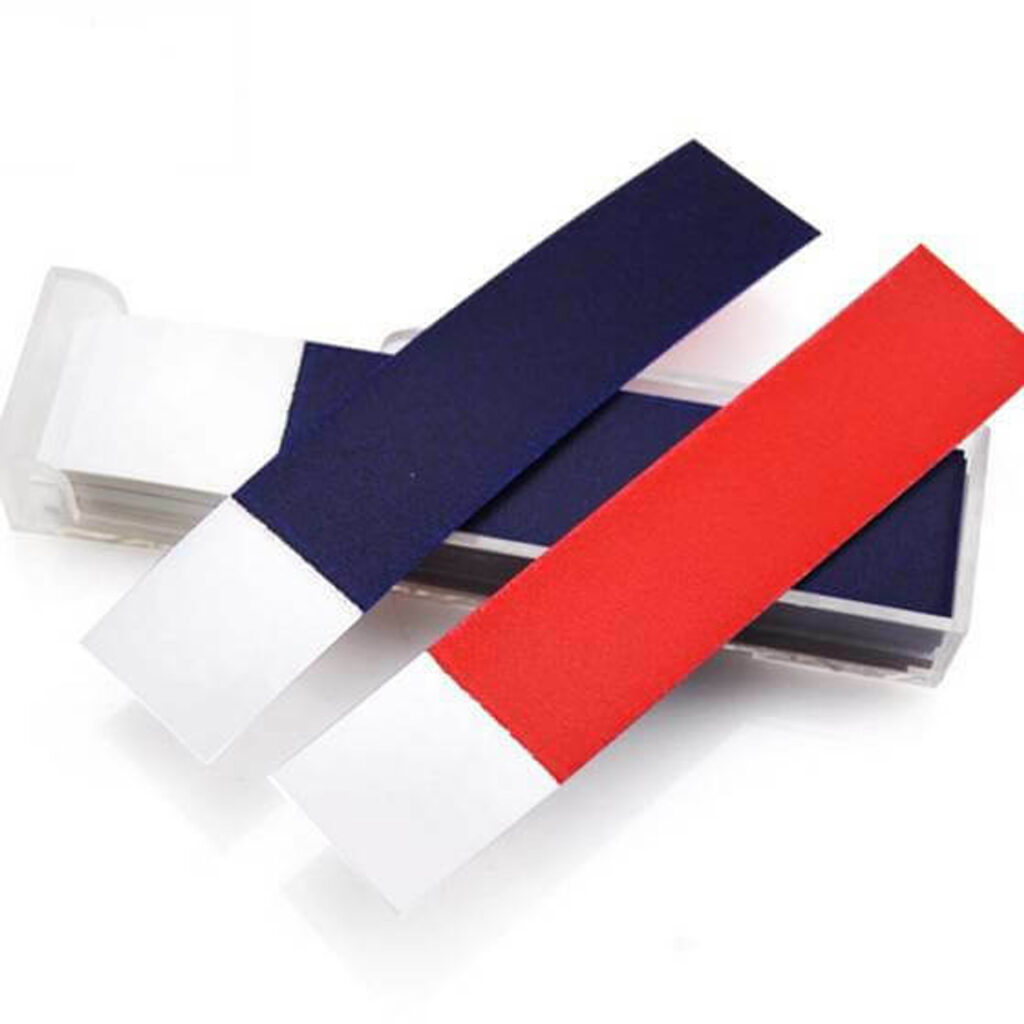Articulating Paper: A Bite-By-Bite Analysis
Dental articulating paper is a thin material used by dentists to examine and correct a patient’s bite. Typically available in thin strips or sheets coated with a specialized ink or substance, it creates marks when pressure is applied. Dentists insert this paper between the teeth and instruct the patient to bite down. The resulting marks on the teeth indicate points of contact and areas where adjustments may be needed to ensure proper bite alignment. This process aids in diagnosing and correcting dental issues or identifying abnormalities in a patient’s bite.
What Is Articulating Paper Used for?
In dentistry, articulating refers to the relationship between the upper and lower teeth during biting or chewing. Various tools, including articulating paper, foils, and wax, can be used to evaluate articulation.
The primary purposes of articulating tools in dentistry are:
Bite Assessment: Dentists use materials like paper or foils to mark and identify contact points between teeth when a patient bites down. This helps identify high spots or irregularities in the bite that may require adjustments.
Dental Work Inspection: After procedures such as fillings, crowns, or denture fittings, articulating materials are used to ensure that the dental work does not cause discomfort or interfere with the natural bite. Marks left on the teeth indicate where adjustments may be necessary.
Diagnosis: By analyzing the marks left by articulating paper, dentists can diagnose issues such as malocclusion (misalignment of teeth), improper dental work, or bruxism (teeth grinding).
What Is Articulating Paper Made Of?
Dental articulating paper is typically made of thin, flexible material coated with a special coloring agent or ink. The coating usually contains waxes, dyes, pigments, or other substances that transfer color upon pressure.
The paper itself is often composed of cellulose or similar materials that provide the necessary flexibility and strength to withstand biting pressure without tearing easily. The coating is applied to one side of the paper, and when the patient bites down, pressure causes the coating to transfer onto the teeth, marking contact points and highlighting areas that may need adjustment.
Does Articulating Paper Come in Different Sizes or Shapes?
Articulating paper primarily comes in two main shapes: straight/curved strips and horseshoe shapes, each serving specific purposes in dental assessments. Strips, the more commonly used form, offer versatility, being cut into desired lengths and widths. They find widespread application in general bite assessments, allowing dentists to gauge overall bite alignment and make occlusal alterations.
On the other hand, the horseshoe-shaped articulating paper plays a specialized role, particularly useful for patients with unilateral bites. Placed on the occlusal surface, or entire biting surface of the teeth, this shape enables dentists to assess and pinpoint imbalances in bite force, determining if a patient favors a specific side. It can help diagnose discrepancies in contact points and pressure distribution, critical for addressing issues related to Temporomandibular Joint Disorder (TMD) and achieving a balanced occlusion.
What Is the Difference between Red & Blue Articulating Paper?
In dentistry, red and blue articulating paper serve similar purposes but have differences in characteristics that cater to various clinical needs.
Thickness: Red articulating paper is typically thicker than blue. The thickness determines the pressure needed to leave a mark on the paper. Red paper is often used for larger restorations or adjustments requiring more force, while blue paper is more sensitive to lighter pressures, suitable for fine adjustments.
Color Intensity: Red articulating paper tends to have a stronger color intensity than blue, making it more visible on teeth and often chosen for identifying initial contact points or high spots during dental procedures.
Sensitivity: Blue articulating paper is more sensitive and thinner, making it suitable for detecting minor irregularities in the bite. It is commonly used in situations where precision in identifying bite discrepancies is crucial.
Dentists may choose between red and blue articulating paper based on the specific requirements of the procedure or the level of precision needed to adjust the patient’s bite. Both colors serve the same fundamental purpose but offer different sensitivities and thicknesses to accommodate various clinical scenarios.
What Thickness of Articulating Paper Should be Used for Teeth?
The choice of articulating paper thickness in dentistry depends on the specific situation and intended use during dental procedures. There isn’t a one-size-fits-all answer, as different thicknesses cater to varying clinical applications.
Thicker Paper: Thicker articulating paper (usually red) requires more force to leave marks on the teeth and is often used for larger restorations or adjustments that need more pressure to identify contact points accurately.
Thinner Paper: Thinner articulating paper (typically blue) is more sensitive and requires less force to leave marks. Dentists use thinner paper for fine adjustments or when precise revisions of slight bite variances are necessary.
In general, dentists might keep both thicker and thinner articulating papers in their arsenal to accommodate different scenarios. The choice of thickness is based on the procedure’s requirements and the level of pressure needed to accurately mark the teeth during bite assessment or dental work adjustments or modifications.
How to choose?
The thickness of articulating paper varies depending on its type. Take a look at the table below:

With so many types, it can be overwhelming to choose. Let’s delve deeper:
What is the significance of articulating paper thickness?
As long as there is an imprint on the articulating paper, the contact distance is less than the thickness of the paper. (See Figure 1)

However, the paper cannot be too thin. Ultra-thin articulating paper is actually made of fibers or metal foils. (See Figure 2)

Thick articulating paper (e.g., 200µm, 100µm thickness) releases dye upon pressure, forming an imprint.
Thin articulating paper (e.g., 8µm, 12µm thickness) requires sufficient pressure to form an imprint.
The differences in the production of thick and thin articulating paper lead to differences in the staining principle, as shown in the figure below:

Impressions from thick articulating paper are often patches.
Impressions from thin articulating paper are mostly dots and lines, and they are more visible when moved.
Examination of high points relies mainly on thick articulating paper:

In practice, there is a significant difference in the impressions displayed by thick and thin articulating paper:

3. Adjustment of non-centric occlusion requires the use of both thick and thin articulating paper:

Use articulating paper of two different colors to distinguish between centric occlusion and functional movement.
In the initial stage of functional movement, the positions of occlusal interference points are most likely to occur. Using thick articulating paper for adjustment can better eliminate occlusal interference and achieve rapid separation of functional movement.
Comparatively, the impressions displayed by thin articulating paper are more refined.
To achieve uniform contact, the use of articulating paper follows a sequence from thick to thin:

In conclusion, here are some recommendations for selecting articulating paper thickness:
For adjustment of intercuspal position (ICP) occlusion, gradually transition from thicker to thinner thicknesses, e.g., from 200µm/100µm to 40µm, and finally to 8µm.
For adjustment of functional movement occlusion, use red thin articulating paper (e.g., 40µm) for ICP and blue thick articulating paper (e.g., 200µm/100µm thickness) for functional movement.
Finally, it’s worth noting that in clinical practice, it’s sufficient to use thick and thin articulating paper separately, and it’s not necessary to have all types available.


